You can have a winter garden depending on where you live, but what are some vegetables to plant in October? Some crops thrive in winter weather conditions, preferring the cooler temperatures of fall to germinate. Plus, October is a great time to plant vegetables, as there are fewer pests and more stable temperatures overall.
In this article, we will go over some of the best vegetables to plant during the month of October so that you can get your winter garden established. We will give you the hardiness zones of some of these crops as well as what they prefer in terms of their sunlight and fertilizer needs. Let’s get started and talk all about some vegetables that grow best during the fall season!
The Best Vegetables to Plant in October
From short-lived peas to long-growing cauliflower, let’s check out some crops that are ideally planted in October, both from seed or from starts. Make sure to check your hardiness zone before committing to any of these veggies, as understanding your climate is key to a thriving winter garden!
Kale
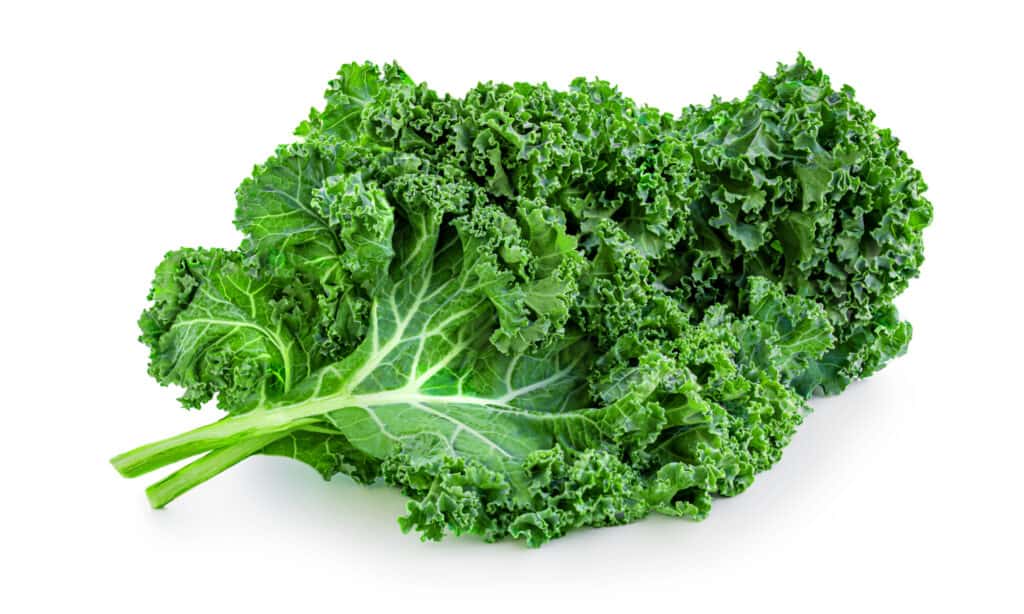
Check out lacinato kale varieties if you need something very cold-hardy.
©Natali Zakharova/Shutterstock.com
Germinating in temperatures as low as 40 degrees Fahrenheit, growing kale is easy and simple. You can sow this plant directly from seed or choose an already established cultivar from your local nursery or garden center. Be sure to thin kale as it grows for best results, and, with proper coverage and care, you can harvest kale throughout the winter time! Check out lacinato kale varieties if you need something very cold-hardy.
Arugula
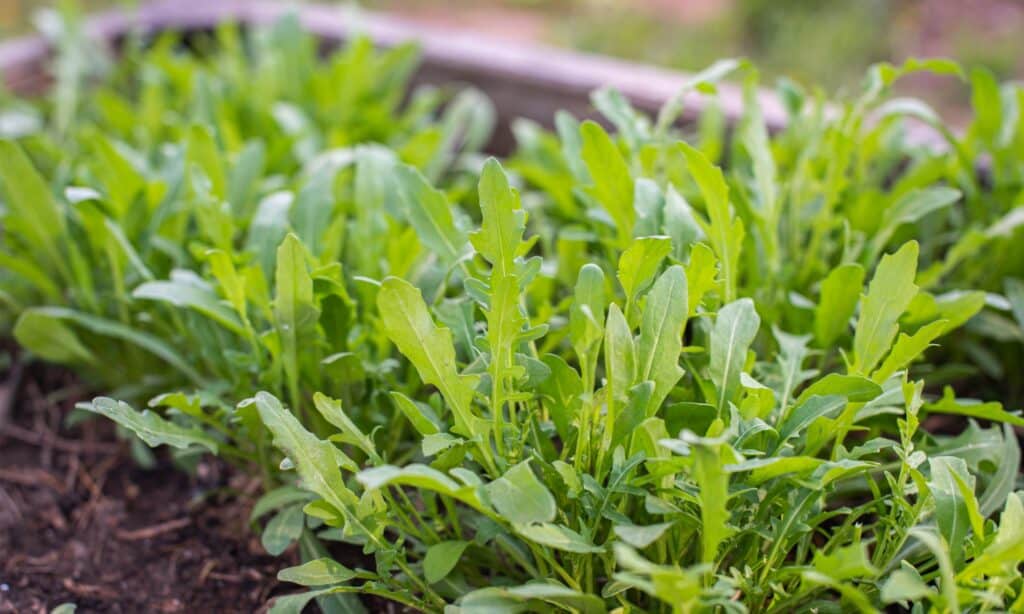
You can plant arugula in October for an early winter or late fall harvest, depending on your region.
©iStock.com/letterberry
Depending on the variety, you can harvest arugula grown from seed in as little as six weeks. Growing in temperatures as low as 35 to 40 degrees Fahrenheit, you can plant arugula in October for an early winter or late fall harvest, depending on your region. Plus, all you need to do is scatter some seeds in some potting soil and wait, and be sure to reseed again and again throughout the fall for enhanced performance and more leaves as the months go by!
Garlic
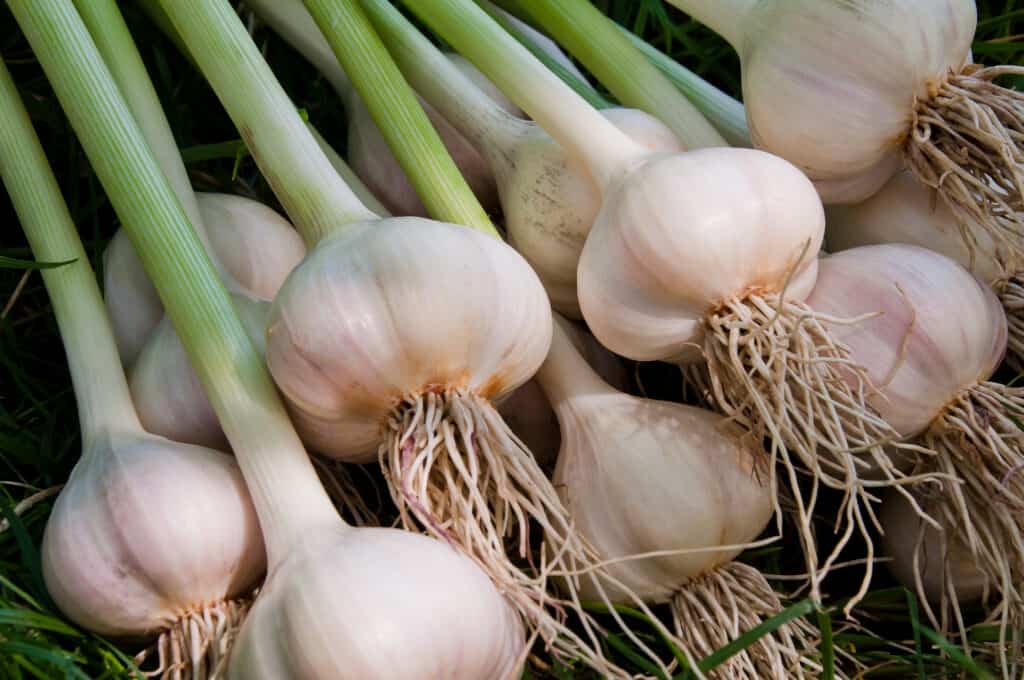
Be sure to plant garlic bulbs purchased from your local garden store or nursery, as store-bought garlic doesn’t grow as reliably.
©Liubomyr Tryhubyshyn/Shutterstock.com
While you won’t be able to harvest it until the peak of summertime, garlic is one of the few crops that you can reliably plant in October with success. Be sure to plant garlic bulbs purchased from your local garden store or nursery, as store-bought garlic doesn’t grow as reliably. However, by sowing these bulbs in October, you are guaranteed to have a garlic harvest, as well as the opportunity to enjoy a delicious garlic scapes in the springtime!
Peas
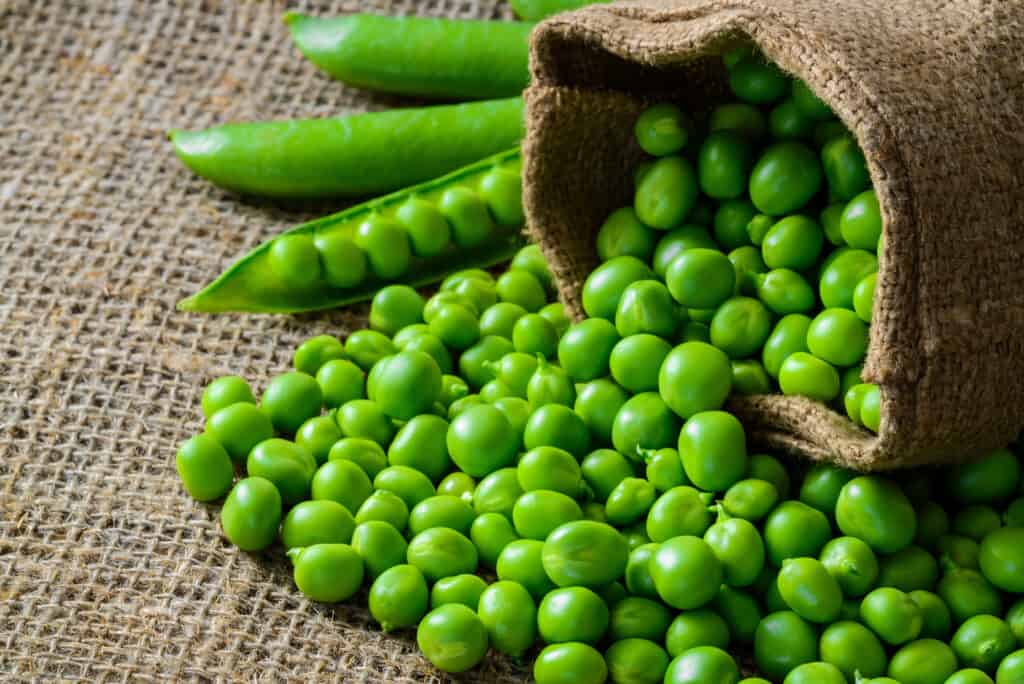
Make sure you have a strong trellis to support these quick-growing veggies, and some pea varieties are more cold-hardy than others.
©287797673/Shutterstock.com
Only growing for a brief period of time, you may be able to squeeze in one last batch of peas in your fall or October garden. Make sure you have a strong trellis to support these quick-growing veggies, and some pea varieties are more cold-hardy than others. Plant in full sunlight for the sweetest and largest peas possible.
Asparagus

While asparagus needs at least two to four years to regularly produce its delicious spears, it is a crop worth investing in.
©DUSAN ZIDAR/Shutterstock.com
If you have an established garden that you care for year after year, you may consider planting asparagus this time around. While asparagus needs at least two to four years to regularly produce its delicious spears, it is a crop worth investing in. Sow asparagus from seed in October, and enjoy this veggie as the years go by! The thinner the stalk, the more tender and delicious it is.
Cauliflower
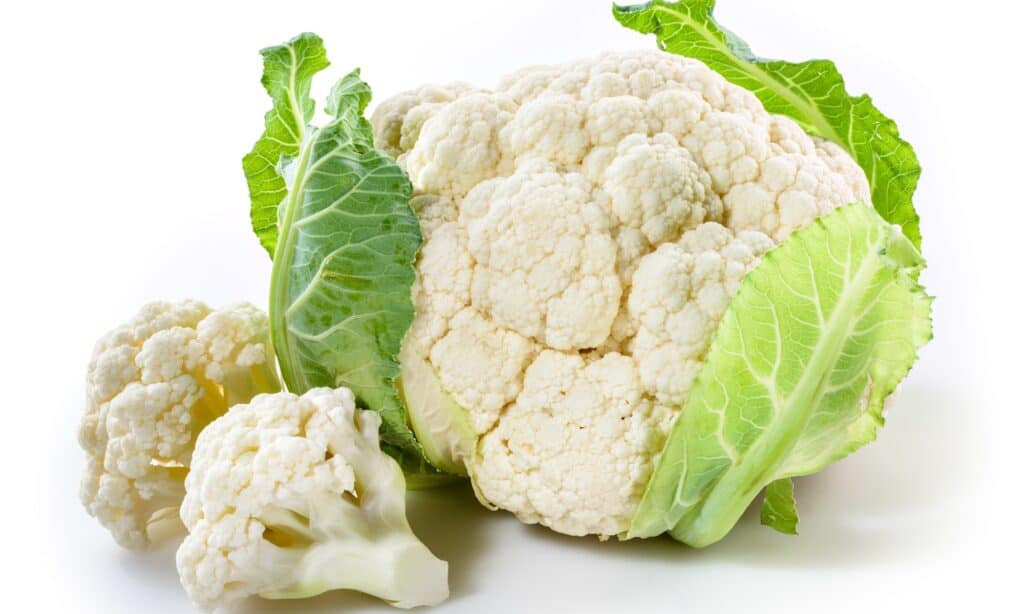
Planting cauliflower in October can be done from seed, but starters or established plants from a garden center are best.
©iStock.com/Tim UR
Another crop that requires patience but not as much patience as asparagus, cauliflower needs a decent amount of time to produce its gorgeous heads. Planting cauliflower in October can be done from seed, but starters or established plants from a garden center are best. This will give you a guaranteed winter harvest and you won’t have to fuss with cauliflower’s delicate nature!
Turnips
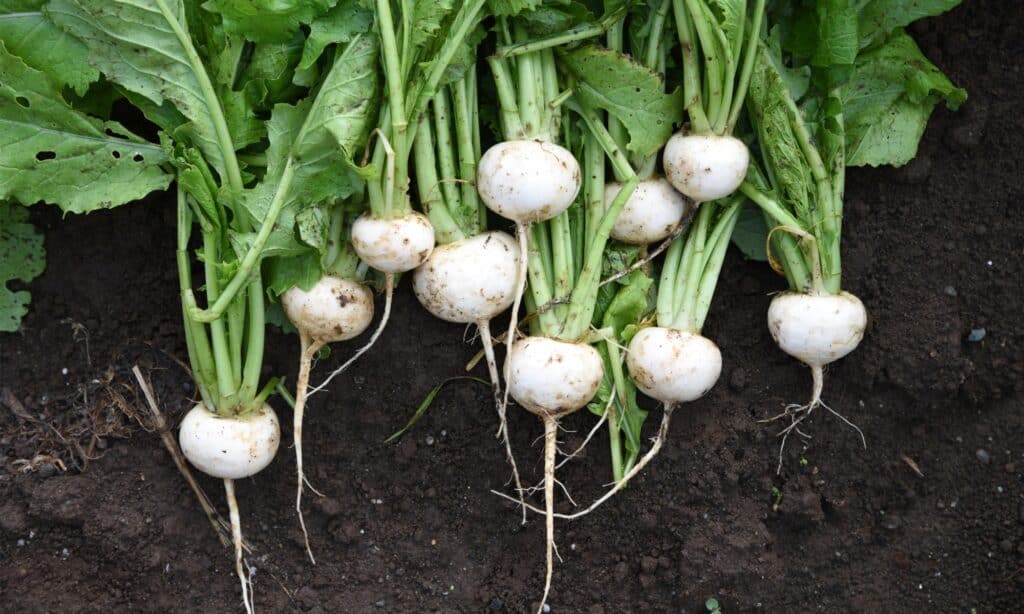
You can either space out your turnip seeds accordingly, or scatter a large number of them and thin the crop later.
©iStock.com/undefined undefined
Remarkably easy to grow, turnips are the perfect addition to an October garden given the fact that you can eat both the roots and the greens. You can either space out your turnip seeds accordingly, or scatter a large number of them and thin the crop later. This makes turnips not only easy to care for, but you’ll also have a fairly large harvest without much effort. Plus, turnips germinate within 5-10 weeks!
Beets
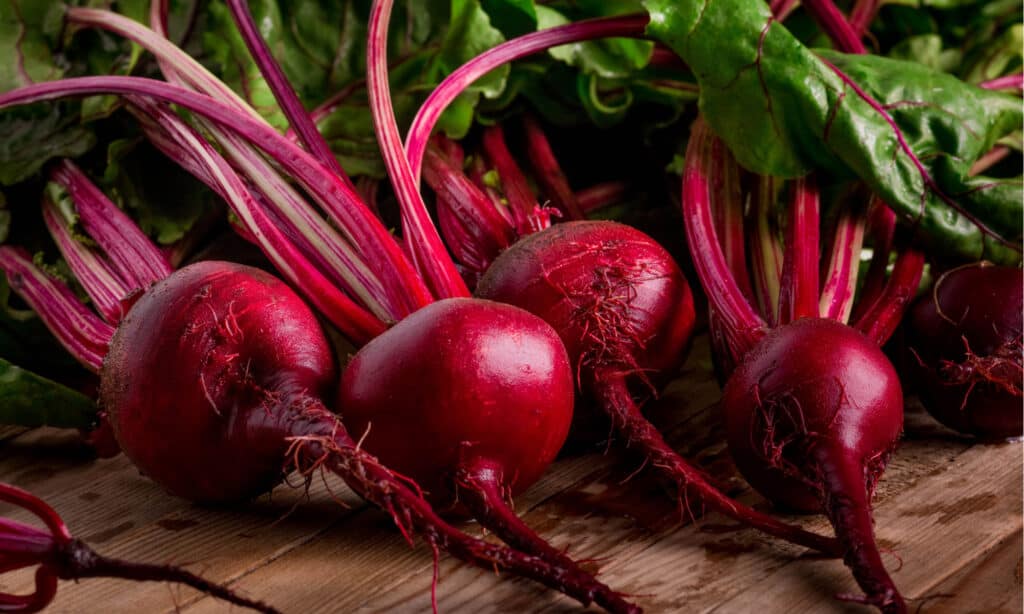
Lower zones can grow beets in October with success, so long as you plant them 4 weeks before your first frost.
©TalyaAL/Shutterstock.com
If you live in hardiness zone 9 or above, you can grow beets throughout fall and winter. However, lower zones can also grow beets in October with success, so long as you plant them 4 weeks before your first frost. Similarly to turnips, you can eat beetroots and beet leaves, and both are packed with vitamins and minerals.
Onions

Make sure you have at least four weeks of temperatures above 50 degrees should you choose to plant onions in the fall.
©nnattalli/Shutterstock.com
If you have the space and are interested in getting your spring planting started early, you can germinate onions in October. Make sure you have at least four weeks of temperatures above 50 degrees should you choose to plant onions in the fall, as they require some heat in order to fully develop. However, these crops go dormant in the winter and we’ll be ready for an early spring harvest once the final frost in your region has passed! Shallots are also easily grown in October.
Radishes

You can sow multiple radish seeds at once and thin them later, leading to an easy growing process and harvest.
©nnattalli/Shutterstock.com
Just like turnips, radishes are extremely easy to grow and care for, so long as you have 4 weeks before your estimated frost date. You can sow multiple radish seeds at once and thin them later, leading to an easy growing process and harvest. These tiny root vegetables are delicious when served raw in salads, often bringing a beautiful red color to any fall dish!
Cabbage

Make sure to give cabbage plenty of space when planted in your garden.
©iStock.com/egal
If you live in a warmer region, you may still be able to plant cabbage seedlings with success in October. Most of the time, cabbage is planted from seed during mid to late summer, but October may still work depending on your region. Make sure to give cabbage plenty of space when planted in your garden, and cover these delicate leaves if you anticipate excess cold-weather earlier than expected!
The photo featured at the top of this post is © iStock.com/letterberry
Thank you for reading! Have some feedback for us? Contact the AZ Animals editorial team.






